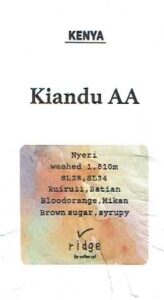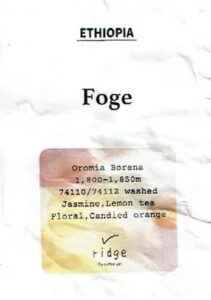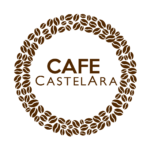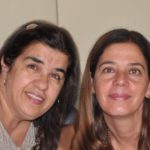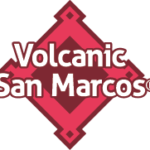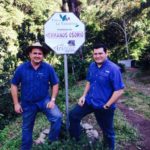
ノベ・ブグレ族と季節労働
ノベ・ブグレ族
ノベ・ブグレ族(Ngäbe Bugle)は、パナマ(Panama)とコスタリカ(Costa Rica)領土の先住民族です。主に、1997年に設立されたノベ・ブグレ自治県(Ngäbe-Buglé Comarca)に居住しています。
コーヒーの収穫期になると、ノベ・ブグレ族の家族は生活の質を上げるため、チリキ県に移住してきます。いくつかの生産者は、彼らの手仕事により多くの賃金を払うためです。さらに、正規労働、ボーナス、社会保障、住居、子供向けの学校などをさまざまな生産者が用意しています。
ノベ・ブグレ族は、生産者としてではなく、農園の労働者として季節労働に従事しています。2008年に彼らはチームを組織し、サンプルの登録費用を払えるようになったため、生産者としてコーヒー産業に加わるようになりましたが、辺鄙な地域では道路が整備されておらず、持続可能なコーヒー生産が困難な状況です。
ノベ・ブグレ族は、自治県に高地の土地があり、コーヒーの世話に仕方を知っているため、インフラの改善や精製技術が向上すれば、高品質のコーヒーを生産できる可能性があります。しかし、ある地域では、移動は徒歩か馬であるため、道路の舗装が特定の人々のニーズを満たすわけではありません。
パナマのコーヒーは需要が供給を上回っているため、パナマのコーヒーの生産量の増加は、ノベ・ブグレ族が彼らの土地でコーヒー生産できるかどうかにかかっています。しかし、彼らは個人ではなく集団で土地を所有するため、銀行の融資を受けることが困難です。
季節労働
ノベ・ブグレ族は、主にチリキ県(Chiriquí Province)の農園で、作物のケア、収穫、精製などの仕事をしていますが、コスタリカのコーヒー農園で労働に従事する人々もいます。
ノベ族やブグレ族は、1941年にパナマと隣国コスタリカの間で国境が画定される以前からこの地域に暮らしていた。つまりノベ=ブグレ特別区からの国境を越えての移動は決して新しい現象ではなく、彼らはむしろ2カ国にまたがって生活してきた人びとであった。とはいえ、この点を考慮してもなお注目に値する近年の特徴は、これらの人びとの大多数がコーヒー農園などでの季節労働を目的とした一時的な移動を毎年繰り返しているということや、その移動人口に含まれる女性の存在が1990年頃より注目され始めたことである。
国際移住機関の報告によると、コーヒー農園などにおける季節労働を目的にパナマからコスタリカへと移動する先住民の数は毎年およそ1万5000人に上る。地域によっては、繁忙期の農園労働者のおよそ9割を先住民が占めており、この代表格がノベ族やブグレ族なのである。
国本 伊代(編著)(2018)「パナマを知るための70章【第2版】 (エリア・スタディーズ42)」,明石書店p.315
旅
1990年代、パナマ政府は先住民の自治領である「ノベ・ブグレ自治県」を設立した。現在、住民の大半がこの自治区内に住んでいる。しかし、地理的に孤立しているため、道路やインフラの建設、重要なサービスの提供は政府にとって高くつき、その結果、住民たちはバラバラになり、脆弱な状態に置かれている。
ジャイロ・コレアは、「飲料水や衛生設備へのアクセスが限られていることもあり、(自治県)の人々の間で栄養失調や寄生虫症がよく見られます」と説明する。IOMが行った調査では、パナマのノベ・ブグレ族の95%が貧困ライン以下で生活し、83%が極貧であると結論付けている。
限られた資源で、家族はコスタリカのコーヒー畑に働きに行くために一緒に旅をする。
パナマ北部でもコーヒーは栽培されているが、コスタリカの方が給料が高く、生活も充実しているため、ノベ・ブグレ族にとって好ましいと考えられている。エミリオは言う。「パナマの農園で2年間働いたが、仕事内容が良くなくて嫌になり、(ラス・メリザスに)戻ってきたんだ。支払いも良くて、ここでの生活に満足してるよ。」
コスタリカの状況は、パナマより良いと思われているが、実際はあまり変わらないかもしれない。ジャイロ・コレアは、「コスタリカはコーヒーを重視しています。市場に力を入れ、労働者の収入も増え、住宅などの福利厚生も充実しています」と言う。しかし、「パナマ政府もさまざまな取り組みを行っており、ここでも状況は変わりつつあります」と強調する。
通常、農家は受け入れ農民労働者のために住居を提供するが、状況は厳しく、7、8人の家族が狭い木造の部屋に詰め込まれて生活している。子どもの権利に取り組む団体「カサス・デ・アレグリア」のコーディネーター、エマニュエル・ゴメス・ロハスは言う。「彼ら(ノベ・ブグレ族)に話を聞くと、コスタリカでは飲料水も電気もない場所で暮らしています。自治県と同じような極めて不愉快なバラックにいますが、それでも彼らは 『ここはあそこよりいい、よく眠れる 』と言います」。
パナマとコスタリカの国境は、今のところ、永久に続く。ノベ・ブグレ族の生活との関連性を認識することは、経済的・社会的正義を求める彼らを理解する上で非常に重要である。
「国境ができた瞬間、私たちはノベ・ブグレ族の人々の国という地理的な領域を分断してしまったのだと思います」とオルティスは言う。「パナマには、コスタリカと同様に、見捨てられたという歴史的な負い目があります。話し合いによって問題に目を向け、この歴史的な負債を解決しなければならないのです。隠していたら何も解決しません。」
The Journey
In the 1990s, the government of Panama established the Comarca Ngäbe-Buglé, an autonomous territory for indigenous residents. The majority of the population now lives within its boundaries. Because of the geography and isolation, building roads and infrastructure, as well as providing crucial services, has been expensive for the government—and it has left the population separated and vulnerable.
Jairo Correa explains, “Malnutrition and parasitic disease are common among the population [in the Comarca] in part due to limited access to potable water and sanitization services.” Studies conducted by the IOM conclude that 95 percent of the Ngäbe-Buglé in Panama live under the poverty line and 83 percent in extreme poverty.
With limited resources, the families travel together to work in the coffee fields of Costa Rica.
Coffee is also grown in northern Panama, but higher paychecks and opinions of life in Costa Rica are perceived as preferable for the Ngäbe-Buglé. Emilio says, “I went to Panama to work for two years, in a farm, but I didn’t like it, the work, it wasn’t as good, so I came back [to Las Mellizas] and now I am content here, I get paid better.”
The situation in Costa Rica is perceived as better than that in Panama, but in reality, may not be much different. Jairo Correa says, “Costa Rica emphasizes coffee. They have put more effort into their markets, workers earn more, and also are provided some benefits, such as housing.” But he emphasizes, “There have been a number of efforts by the government of Panama, and things are changing here too.”
Farmers normally provide housing for incoming farmworkers, but situations are difficult, and families of seven or eight live packed into small wood rooms. Emmanuel Gómez Rojas, coordinator of Casas de Alegria, an organization working to address children’s rights, says, “When you talk to them [Ngäbe-Buglé], in Costa Rica they live in places [within Costa Rica] without potable water, without electricity. They are in barracks that are extremely unpleasant, similar to that of the Comarca but they still say, ‘Here we are better than there, we sleep better.’”
The border between Panama and Costa Rica is, as of now, a permanent fixture. Recognizing its relevance to the lives of the Ngäbe-Buglé is critical to understanding their search for economic and social justice.
Ortiz says, “I think that the moment that we put up a border, we divided the geographic area, the country of the Ngäbe people. There is a historical debt, in Panama as much as Costa Rica, of abandonment. It is a historical debt that we have to solve, and we can only solve the problem if we talk and bring awareness to the problem. If we hide it, nothing will be solved.”
SAMIRA TELLA"The Ngäbe-Buglé: A Home Cut in Two",Pulitzer Center 2018年7月24日.
<参考>
波塚 奈穂「パナマにおけるノベ・ブグレ族の社会及び集合的アイデンティティの変容―開発への反対運動を通じて―」,東京外国語大学学術成果コレクション<http://repository.tufs.ac.jp/handle/10108/89928>

